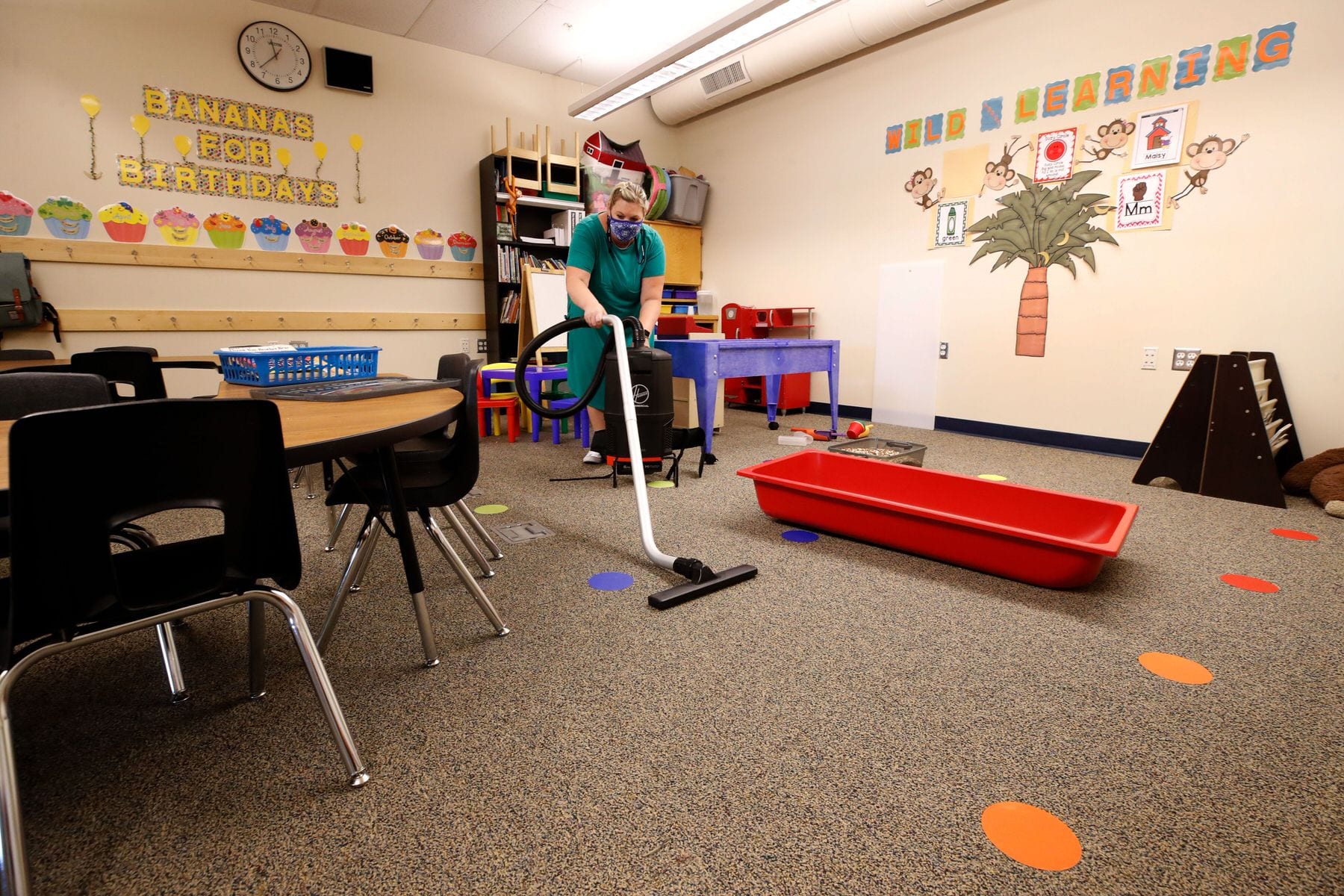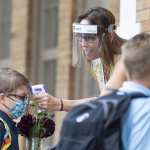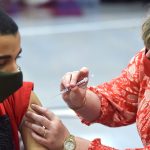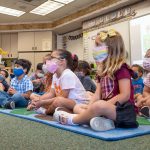The Centers for Disease Control and Prevention issued new guidance Friday for schools to reopen for in-person learning — a major step in President Joe Biden’s goal to get kids in classrooms by the end of his first 100 days in office.
The guidance adopts a tiered approach. It recommends that all schools adopt universal masking, maximize physical distancing of at least 6 feet whenever possible, institute regular and thorough handwashing, have regular cleaning and maintenance of school facilities, and use diagnostic COVID testing with rapid contact tracing — following up on someone’s close contacts if that person tests positive for the virus — and ensuring that those close contacts quarantine in keeping with CDC guidelines.
For schools in communities with low to moderate transmission — less than 5 percent of all counties — the agency recommends schools return to full in-person learning, CDC Director Rochelle Walensky said on a media phone call.
But for the vast majority of counties, which are in the “red zone” of particularly high community transmission — more than 100 new cases per 100,000 people in the past seven days, or test positivity rate higher than 10 percent — the CDC still recommends some kind of hybrid learning model: Students and school staff would physically distance by teaching smaller groups of students in-person at a time using “cohorts” or “pods.” They also recommend improving ventilation, including with open windows and doors.
High schools in high-transmission areas, where smaller group modules may be harder to implement, may have to rely more on virtual learning, Walensky said.
The agency also recommends limiting extracurricular activities such as after-school sports.
“CDC is not mandating that schools reopen,” Walensky said. “These recommendations simply provide schools a long-needed roadmap for how to do so safely under differential levels of disease in the community.”
The guidance may not be final. The emergence of new, faster-spreading variants of the virus threaten to upend the progress being made. If that happens, Walensky said, the CDC may revise its assessment of what is safe.
“If we have increases of community spread linked to these variants as they might emerge, we would have to follow increased amounts of mitigation strategies,” she said. “If we get to a point where we are beyond the red zone — really high levels of community spread related to these variants or related to more transmission — we may need to visit this again.”
Per an October study, about three-fourths of the nation’s largest school districts have opted for completely remote learning. A little over a quarter of all districts adopted a hybrid approach at the start of the year, though many reverted to fully remote models as coronavirus cases climbed last fall. The federal government does not have robust data on how many schools are using hybrid models right now.
School closures have disproportionately affected women, both as parents and as educators. In September, about 1.6 million working mothers with school-age children left the workforce. Mothers are far more likely to have shouldered the burden of supervising remote school, polling shows. Meanwhile, many teachers, three-fourths of whom are women, have said the stress of pandemic education has imposed mental health strains unlike anything they have experienced before.
But the body of evidence suggests that in-person schooling likely doesn’t contribute to spread of COVID-19. In an article published January 26, CDC scientists wrote that “there has been little evidence that schools have contributed meaningfully to increased community transmission,” especially compared to the rapid viral spread in nursing homes or meatpacking centers.
Experts still stress that safely reopening schools will require intense mitigation efforts — including reducing community spread elsewhere, improving ventilation, and and following the strategies outlined in the CDC guidance. They also note that activities such as student athletics are more likely to facilitate the virus’ spread.
Though the rate of new infections is declining, and more than 10 percent of the population has gotten at least one dose of a COVID-19 vaccine, the United States is still averaging more than 100,000 new cases per day. The seven-day rolling average of deaths per day is just under 2,800.
Many disease mitigation efforts, such as upgrading schools’ old ventilation systems, will require federal funding. Some educators have also pointed out that schools serving larger shares of Black and Latinx families — who are more often exposed to the coronavirus due to systemic inequalities in areas like housing, income and occupation — are also less likely to have advanced ventilation. About a third of public schools don’t have updated heating, ventilation and air-conditioning systems. Meanwhile, access to diagnostic testing could also be a challenge for schools with fewer resources.
Recent polling from Axios/Ipsos suggests that 55 percent of Black parents and 40 percent of Latinx parents worry about schools reopening too quickly, compared to only 25 percent of White parents. Concerns didn’t appear to vary substantially based on gender.
Biden’s recovery plan, which is still working its way through Congress, would put $130 billion toward safely reopening schools, including money that could go toward testing and ventilation.
Notably, the CDC does not say teachers must have received a COVID-19 vaccine in order to return to in-person learning, so long as other efforts are taken to prevent the virus’ spread. But Walensky said the agency does encourage states to include school employees — along with other frontline workers — in its priority vaccination groups.
At least 28 states, the District of Columbia and Puerto Rico have made at least some teachers eligible for an early vaccine, according to EdWeek. But eligibility alone doesn’t translate into getting people vaccinated: There are still far more people who qualify for a vaccine than there are doses available.
Anthony Fauci, the nation’s top infectious diseases doctor, said earlier this week that he anticipates April will be “open season” for the general public to start getting vaccines, though it will take several months for all those injections to be administered.
It’s not clear if that timeline factors in any potential new vaccines that would come from the emergency authorization of a vaccine being developed by Johnson & Johnson. The Food & Drug Administration will review data on that immunization later this month, with doses potentially being available in April.






